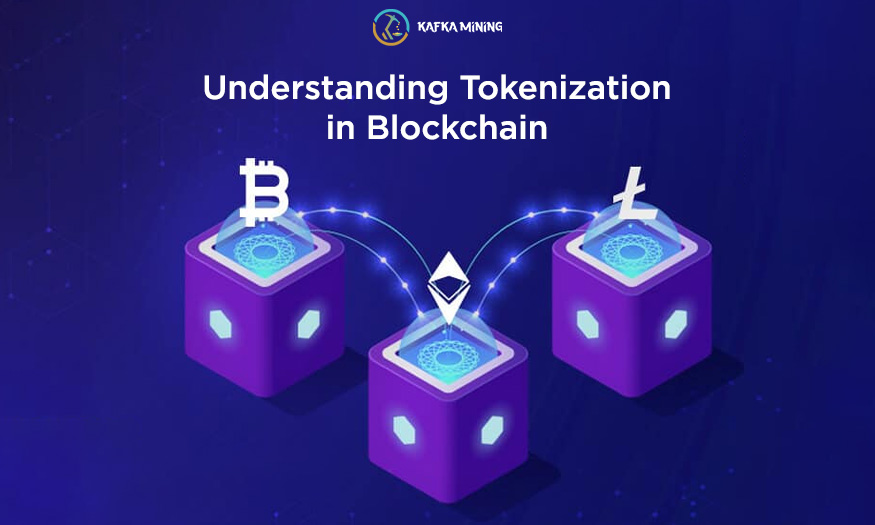
Welcome to our exploration of "Understanding Tokenization in Blockchain." In this blog, we delve into the transformative concept of tokenization within the realm of blockchain technology. Tokenization has revolutionized the way assets are represented, transferred, and traded digitally. Join us as we uncover the types of tokens, their applications, and the profound impact of tokenization on finance, technology, and beyond.
Tokens are assets within the blockchain ecosystem that enable the secure and efficient transfer, storage, and verification of information and value. These crypto tokens can be designed with unique features that extend their functionality and come in various forms. Security tokens, utility tokens, and cryptocurrencies hold significant potential for raising liquidity, improving transaction efficiency, and increasing transparency across numerous industries.
Tokenization as a concept predates blockchain technology. Since the 1970s, the financial services industry has employed tokenization to safeguard customers' private data. This involves converting sensitive information, such as social security numbers and credit card numbers, into a string of alphanumeric characters, which is then processed through a cryptographic function to generate a unique token.
This method is somewhat akin to the tokenization process enabled by blockchain technology. Blockchain-based tokenization significantly expands the potential uses of digital tokens across various industries by allowing for more secure and flexible asset tokenization. In contrast, earlier tokenization technologies were primarily focused on protecting sensitive data.
The advantages of crypto tokenization can be categorized into three main areas:
Increased Liquidity: Tokenizing assets makes them accessible to a much broader audience, enhancing market liquidity and removing the "liquidity premium" associated with traditionally harder-to-sell investments like fine art or real estate. Tokenized assets allow investors to own a fraction of the underlying asset and trade them freely online. This not only boosts liquidity in existing markets but also provides more investors with a wider range of investment opportunities.
Faster and Cheaper Transactions: Crypto tokens enable the bypassing of market intermediaries and other middlemen typically involved in traditional asset management. This results in a more streamlined and cost-effective method of transferring value, significantly reducing transaction costs and processing times. Moreover, since crypto tokens are decentralized and exist on the blockchain, they can be traded globally at any time.
Transparency and Verifiability: Crypto tokens' existence on the blockchain allows users to easily track their origins and transaction histories, which can be cryptographically verified. The immutability and transparency of blockchain technology ensure the accuracy of each token's history and facilitate automatic transaction recording. These features enable crypto tokens to achieve a level of reliability that few other digital assets can match.
In summary, crypto tokens enable the efficient and secure transfer, storage, and verification of information and value. Asset tokenization not only significantly benefits the financial services industry but also provides advantages to smaller investors and individuals. These groups gain from expanded market access and more efficient methods to leverage their existing assets.
The differences between the main types of crypto tokens can become blurred depending on the specific features of a token or the platform used for tokenization.
Utility Tokens
Utility tokens grant access to specific services or products within a single blockchain network. They can be used to power decentralized markets, pay transaction fees, drive the consensus mechanism of a blockchain network, or allow holders to propose and vote on new ideas within a decentralized autonomous organization (DAO) or other decentralized networks.
Security Tokens
Security tokens represent specific investments, such as shares in a business, voting rights within a company or centralized organization, or other valuable material or digital goods. These tokens act as digital representations of underlying assets or utilities and can be created with various unique qualities and ownership rights. While utility tokens are used for practical applications, security tokens focus on establishing ownership rights.
Currency Tokens
Currency tokens are designed for exchange and usage. Some stablecoins, like MakerDAO's DAI and Gemini's GUSD, are backed by underlying assets. Others are not based on underlying assets; their value is directly tied to their distribution strategy and the underlying blockchain network.
Over time, tokenization has significantly enhanced data security for businesses and is now revolutionizing global asset ownership transfer capabilities. Despite its potential as an investment method, tokenization faces challenges due to varying technology and investment laws across different countries. Governments are adapting legislation, and public awareness of token usage is increasing, fostering technological advancements and recognizing tokens as powerful financial instruments.
Among the latest advancements, soulbound tokens have garnered considerable attention from blockchain developers. For example, Phemex introduced the Phemex Soul Pass, a soulbound token (SBT) that acts as an autonomous identifier granting exclusive benefits within the Phemex Web3 ecosystem.
Leave a Comment